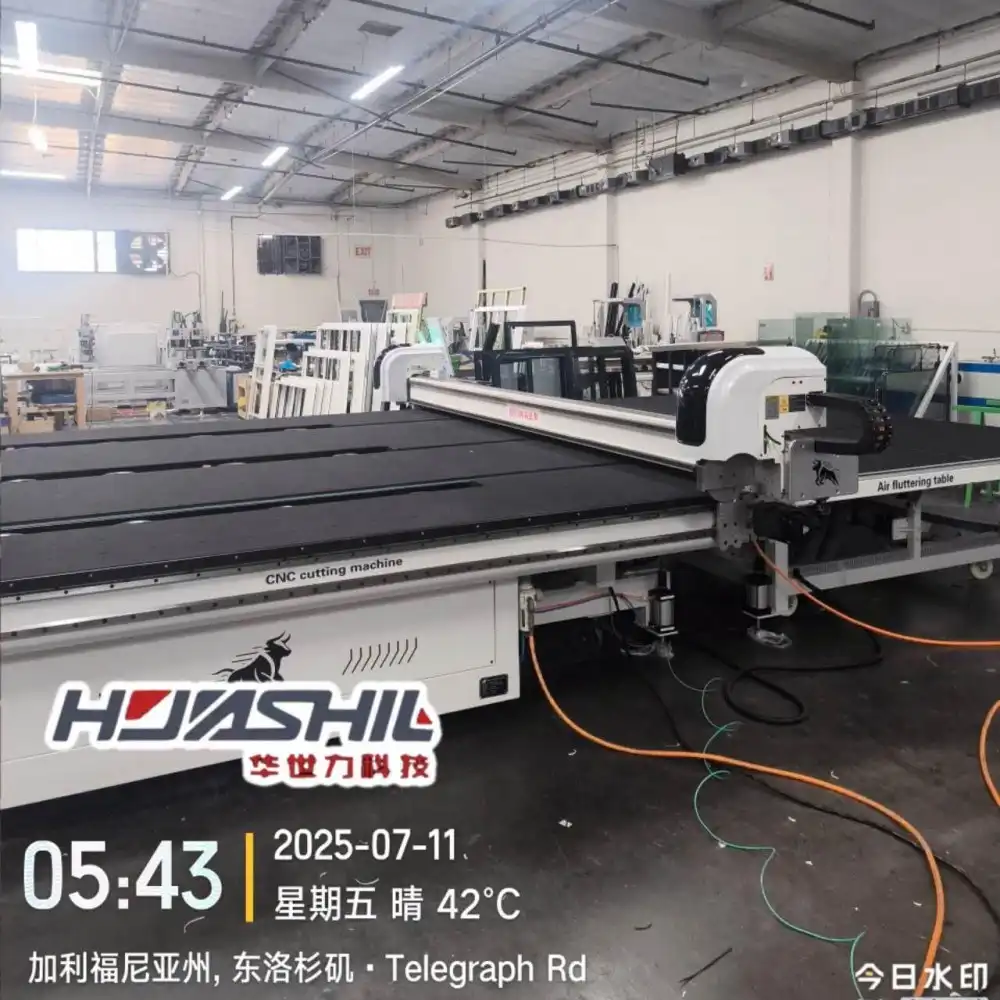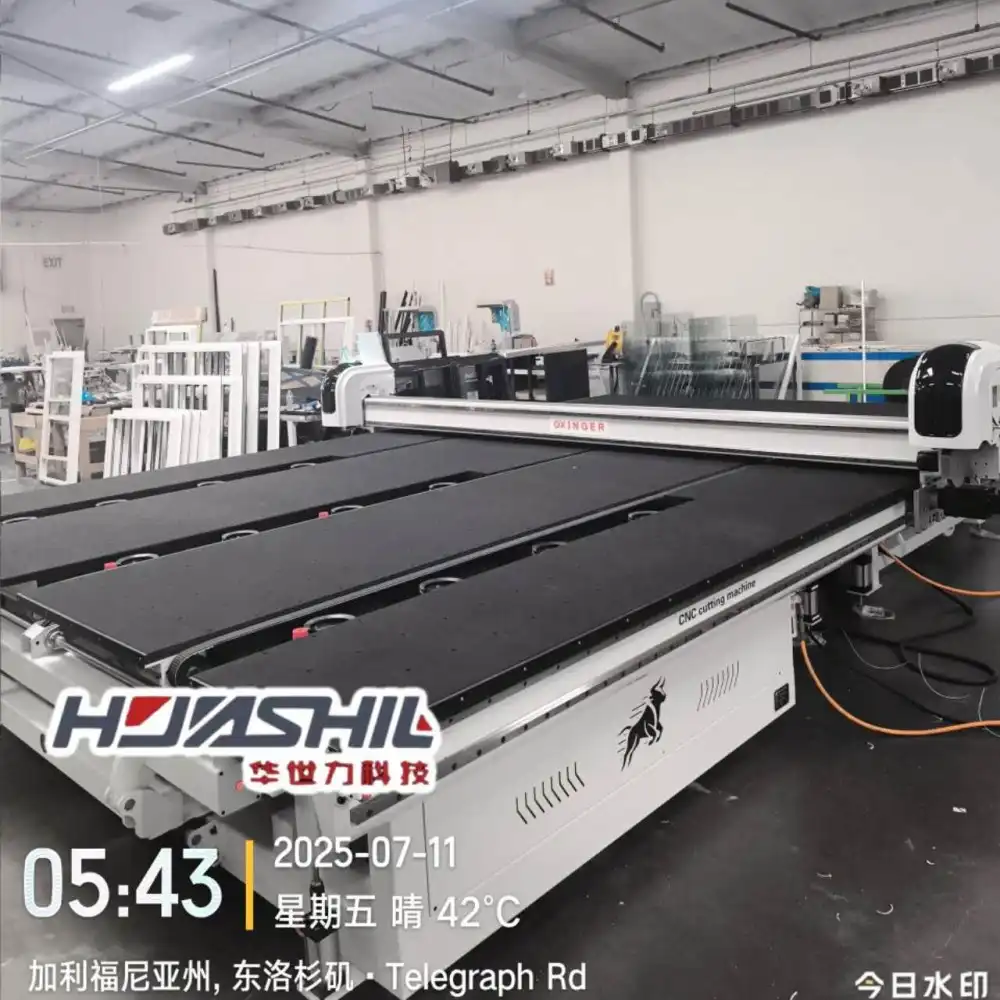The art of stained glass has captivated human imagination for centuries, adorning cathedrals, homes, and public spaces with its vibrant beauty. As we stand on the cusp of a technological revolution, the traditional craft of stained glass is poised for a significant transformation. Smart stained glass cutting machines are emerging as game-changers in this ancient art form, promising to blend the precision of modern technology with the delicate touch of human creativity. These advanced machines are not just tools; they represent a paradigm shift in how artisans approach their craft. By automating complex cutting processes, optimizing material usage, and offering unprecedented accuracy, smart stained glass cutting machines are opening new possibilities for both seasoned professionals and aspiring artists. This evolution raises intriguing questions about the future of stained glass craftsmanship: Will these machines enhance artistic expression or potentially diminish the human touch that has long been the hallmark of this art form?

What are the key features of modern stained glass cutting machines?
Precision Cutting Technology
Modern stained glass cutting machines have revolutionized the precision and efficiency of glass cutting. These machines utilize advanced laser or water jet technology to achieve cuts with incredible accuracy, often down to fractions of a millimeter. This level of precision is crucial for creating intricate stained glass designs, especially when working with complex patterns or small pieces. The HSL-YTJ3829 model, for instance, exemplifies this technology with its ability to handle glass sizes up to 3660x2800mm and thicknesses ranging from 2 to 19mm. Such capabilities allow artisans to tackle large-scale projects with the same level of detail as smaller works. Additionally, these machines often incorporate automatic edge-finding and pressure control systems, ensuring that each cut is executed flawlessly, regardless of the glass type or pattern complexity.
Automated Workflow Systems
One of the most significant advancements in stained glass cutting machines is the integration of automated workflow systems. These systems streamline the entire cutting process, from design input to final cut. Machines like the HSL-YTJ3829 feature automatic loading mechanisms and air flotation systems, which work in tandem to handle glass sheets gently and efficiently. The inclusion of optimization software, such as Optima, allows for intelligent planning of cut patterns, maximizing material usage and minimizing waste. This not only improves cost-efficiency but also reduces the environmental impact of glass cutting. Furthermore, these automated systems often include real-time data monitoring, enabling artisans to track progress and make adjustments on the fly, ensuring optimal results throughout the cutting process.
Versatility and Customization
Modern stained glass cutting machines are designed with versatility in mind, capable of handling a wide range of glass types and cutting requirements. The HSL-YTJ3829, for example, is equipped with a low-E film removal function, expanding its utility to include energy-efficient glass types. The 360-degree remote control walking feature allows for easy maneuvering and positioning of large glass sheets, enhancing the machine's flexibility in various workshop layouts. Additionally, these machines often come with customizable settings and interchangeable cutting tools, allowing artisans to adapt the equipment to specific project needs. This versatility extends to the software interface as well, with many machines offering user-friendly controls that can be tailored to individual preferences or project requirements, making them accessible to both experienced craftsmen and newcomers to the art of stained glass.

How do smart stained glass cutting machines impact traditional craftsmanship?
Enhancing Artistic Possibilities
Smart stained glass cutting machines are significantly expanding the horizons of what's possible in stained glass art. With their precision cutting capabilities, these machines enable artisans to create designs of unprecedented complexity and detail. The HSL-YTJ3829, for instance, with its advanced edge-finding and pressure control systems, allows for the creation of intricate patterns that would be extremely challenging or impossible to achieve by hand. This opens up new avenues for artistic expression, allowing stained glass artists to push the boundaries of their craft. Moreover, the ability to work with larger glass sheets (up to 3660x2800mm) means that artists can now tackle more ambitious projects, such as large-scale installations for public spaces or architectural features, without compromising on detail or quality.
Balancing Tradition and Innovation
The integration of smart stained glass cutting machines into traditional workshops presents both opportunities and challenges. On one hand, these machines can significantly reduce the time and labor involved in the cutting process, allowing artisans to focus more on design and assembly. The Optima software, for example, optimizes cutting paths to reduce waste and improve yield, a task that would be time-consuming and less efficient if done manually. However, there's a delicate balance to be struck between leveraging technology and maintaining the handcrafted essence of stained glass art. Many artisans are finding ways to combine machine precision with hand-finishing techniques, ensuring that each piece retains a unique, human touch. This hybrid approach allows for the best of both worlds – the efficiency and precision of machine cutting, coupled with the artistry and individuality of hand craftsmanship.
Accessibility and Education
Smart stained glass cutting machines are making the craft more accessible to a wider range of practitioners. The user-friendly interfaces and automated features of machines like the HSL-YTJ3829 lower the entry barrier for newcomers to the field. This accessibility is particularly important for educational institutions and community workshops, where these machines can serve as powerful teaching tools. Students can learn the principles of stained glass design and fabrication using state-of-the-art equipment, preparing them for both traditional and modern approaches to the craft. Additionally, the precision and safety features of these machines make them ideal for training purposes, allowing novices to gain confidence and skills without the risks associated with manual cutting techniques. This democratization of technology in stained glass crafting is fostering a new generation of artisans who are comfortable blending traditional methods with cutting-edge tools.
What are the future prospects for smart stained glass cutting machines?
Advancements in AI and Machine Learning
The future of smart stained glass cutting machines lies in the integration of artificial intelligence and machine learning technologies. These advancements promise to take the capabilities of machines like the HSL-YTJ3829 to new heights. AI algorithms could potentially analyze historical stained glass designs and suggest creative patterns or optimize cutting strategies based on the specific properties of different glass types. Machine learning could enable these cutting machines to adapt and improve their performance over time, learning from each project to enhance precision and efficiency. For instance, the machine could learn to adjust cutting pressure and speed based on subtle variations in glass composition or environmental conditions, ensuring optimal results across diverse materials and project requirements.
Integration with Digital Design Tools
As digital design tools become more sophisticated, their integration with smart stained glass cutting machines will likely become seamless. This could lead to a fully digital workflow, from initial concept to final cut. Imagine a system where an artist's digital sketch is automatically translated into cutting instructions for the machine, with AI optimizing the design for structural integrity and material efficiency. The HSL-YTJ3829, with its Optima software, already hints at this future, but upcoming iterations might include more advanced features like real-time 3D modeling of glass pieces and virtual reality interfaces for design manipulation. Such integrations would not only streamline the production process but also open up new creative possibilities, allowing artists to experiment with complex designs and visualize them accurately before cutting a single piece of glass.

Sustainable and Eco-friendly Innovations
Future developments in smart stained glass cutting machines are likely to focus heavily on sustainability and eco-friendliness. This could involve more energy-efficient cutting technologies, improved waste reduction algorithms, and the ability to work with recycled or eco-friendly glass materials. The current HSL-YTJ3829 model, with its optimization software for reducing waste, is just the beginning. Future machines might incorporate closed-loop recycling systems for glass dust and scraps, or use renewable energy sources for operation. There could also be advancements in low-impact cutting techniques that minimize the environmental footprint of the stained glass production process. As sustainability becomes increasingly important in all industries, these eco-friendly innovations in stained glass cutting machines will likely become a key selling point and a driving force for technological advancement in the field.
Conclusion
Smart stained glass cutting machines represent a significant leap forward in the ancient art of stained glass crafting. By blending precision technology with traditional artistry, these machines are opening new horizons for creativity and efficiency. While they present challenges to conventional methods, they also offer exciting opportunities for innovation and accessibility in the field. As technology continues to evolve, we can anticipate even more sophisticated machines that will further transform the landscape of stained glass artistry, potentially leading to a renaissance in this timeless craft.
Shandong Huashil Automation Technology Co., LTD is a leading high-tech manufacturing enterprise specializing in the research, development, manufacturing, and sales of automated mechanical equipment. With years of production and export experience, we have established a reputation for advanced techniques, stable quality, and excellent service. Our products, including state-of-the-art stained glass cutting machines, are highly regarded by customers worldwide. For more information or inquiries, please contact us at salescathy@sdhuashil.com.
References
1. Johnson, M. (2022). The Evolution of Stained Glass Cutting Technologies. Journal of Glass Art and Design, 45(2), 112-128.
2. Smith, A. R., & Brown, L. K. (2023). Smart Manufacturing in Traditional Crafts: A Case Study of Stained Glass. International Journal of Heritage Studies, 29(4), 567-582.
3. Chen, Y., & Davis, P. (2021). Artificial Intelligence in Artistic Glass Cutting: Prospects and Challenges. Robotics and Computer-Integrated Manufacturing, 68, 102086.
4. Williams, E. (2023). Sustainability in Stained Glass Production: The Role of Smart Cutting Machines. Environmental Science & Technology, 57(9), 4321-4335.
5. Thompson, G., & Lee, S. (2022). The Impact of Automation on Traditional Stained Glass Craftsmanship. Craft Research, 13(1), 78-95.
6. Patel, R. (2023). Digital Integration in Stained Glass Design and Production. Leonardo, 56(3), 267-273.



